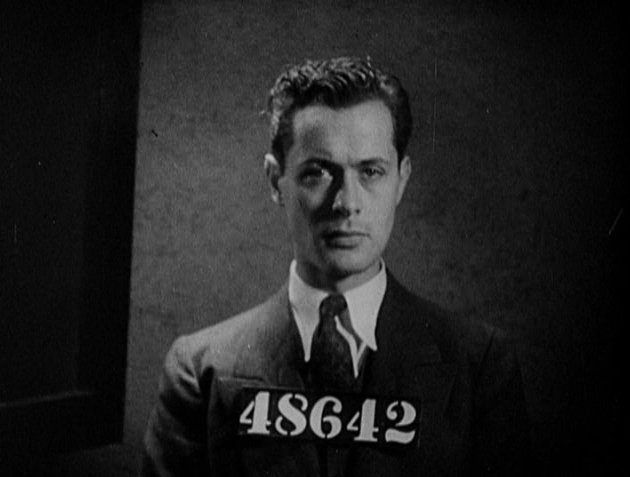1928 is one of the most fascinating years in film history. Hollywood was in a state of transition, quickly trying to learn how to match visuals with sounds to deliver talking pictures to an eager public. The industry had already mastered the silent film making process and were churning out good quality movies. Many projects in the works were put on hold until talkie versions could be created. Other completed works were retrofitted with talking and singing sequences and synchronized sound to create part-talkies. Beggars of Life (1928) was one of those movies.
With all the other studios racing to create talkies, Paramount presented their first ever contribution with Beggars of Life. Synchronized sound of music, gun shots, moving trains, etc. added to the silent picture. A singing sequence filmed with Wallace Beery was added to the movie after it was completed. The retrofitted scene was used to market the movie. Advertisements proclaimed "come hear Wallace Beery sing!"
 |
| Louise Brooks, Richard Arlen and Wallace Beery in Beggars of Life (1928) |
"Even them people in feather beds ain't satisfied -- we're all beggars of life." - Jim, as played by Richard Arlen
Inspired by the popular memoir by Jim Tully, Beggars of Life follows the story of Jim and Nancy, two hoboes on the move. Nancy (Louise Brooks) is an orphan who killed her adoptive father when he tried to rape her. She encounters hobo Jim (Richard Arlen) and the two set off. They don't intend to stick together. It's only when Jim learns that Nancy is wanted for murder and there's a $1,000 reward for her capture that he feels protective of Nancy. They plan to train hop their way to Alberta, Canada to escape the police and find a better life for themselves. On the road, they meet a band of hoboes and Oklahoma Red (Wallace Beery), a booze-loving member of the crew who takes a particular interest in Nancy who is dressed like a man but later revealed to the others to be a woman. With the cops on their tail, Nancy, Jim, Oklahoma Red and the rest of the hoboes set off on a train-hopping adventure complete with a spectacular crash.
Beggars of Life was directed by William Wellman for the then Paramount Famous Lasky Corporation. Wellman once called the film " the best silent picture I ever made." Beggars of Life was considered lost until Kevin Brownlow discovered 16mm print in London during the 1960s. The original soundtrack for the film is still considered lost so while we see Wallace Beery singing and title cards with lyrics help us out, we can't hear him.
 |
| Richard Arlen and Louise Brooks in Beggars of Life (1928) |
Beggars of Life displays the sophistication of silent filmmaking that was possible in that era. The quality would significantly change while studios were getting over the learning curve of making talking pictures. Beggars of Life teamed up Louise Brooks and Wallace Beery for a second time. They appeared in the 1927 film Now We're In the Air. Louise Brooks was reaching the peak of her fame and sports her trademark Lulu haircut in the film. I enjoyed her performance and that of Richard Arlen who plays her love interest Jim, based on the real life Jim Tully. The film suffers from some antiquated notions especially with Edgar Washington's stereotyped African-American character. This sort of thing is unfortunately part and parcel with movies of the era. Real life hoboes were hired to play themselves in the film and overall the film is given a very gritty realistic feel even with the glossiness of it's high production value.
Kino Lorber recently released the DVD and Blu-Ray as part of their line of Kino Classics. Their home video releaseis a digital reproduction of George Eastman Museum's 35mm restoration. The preservation was funded by The Film Foundation and the DVD and Blu-Ray release features a new score by The MontAlto Motion Picture Orchestra. The Blu-Ray includes audio commentary by William Wellman Jr. and Thomas Gladysz of the Louise Brooks Society. The Blu-Ray edition is of spectacular quality. I can only imagine what we have access to now looks even better than what was screened in 1928.
Many thanks to Kino Lorber for sending me this movie to review!
Sources:
Wild Bill Wellman: Hollywood Rebel by William Wellman Jr.
Beggars of Life Huffington Post article by Thomas Gladysz
Today's Sounds for Yesterday's Films: Making Music for Silent Cinema by K.J. Donnelly and Ann-Kristin Wallengren


















